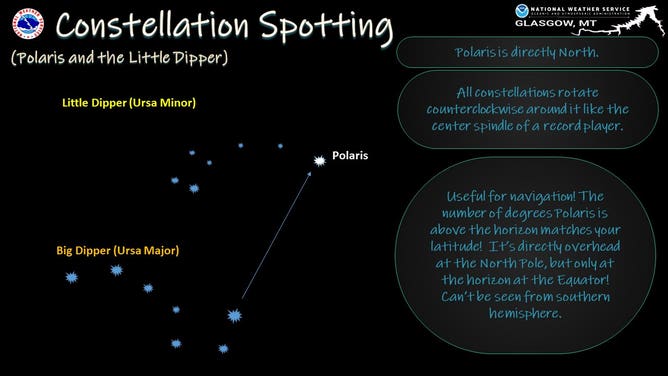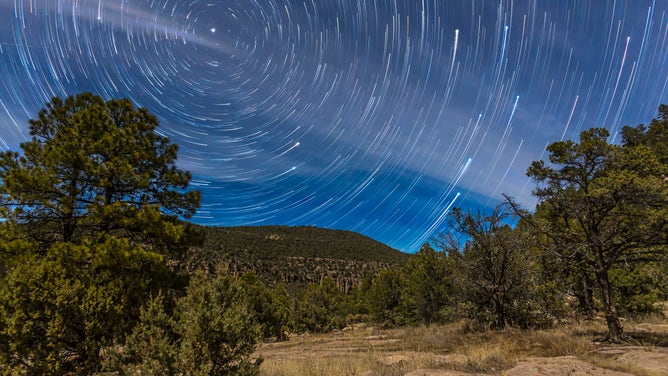Feeling lost? Here is a handy way to find the North Star
Provided the sky is clear enough to find the stars, you can always find north.

Summer solstice twilight and circumpolar star trails over the badlands of Dinosaur Provincial Park, Alberta.
(Alan Dyer /VW PICS/Universal Images Group / Getty Images)
GLASGOW, Mont. -- If you've ever been out at sea or hiking in the hills on a clear night and wanted to get your bearings… well, these days, you probably flip on your smartphone and check. But let's say you're out of battery, or a dolphin ate your phone, or you want to impress your friends with your navigational skills.
The answer key is in the skies above.
Provided the sky is clear enough to find the stars, you can always find north. The star Polaris is otherwise known as the "North Star," and for a good reason -- its position in our sky sits atop the North Pole. No matter where you are in the Northern Hemisphere, Polaris always sits to the north.
The farther north you go, the higher the star sits in the sky -- its angle above the horizon matches your latitude. At the North Pole, the star sits straight above, and on the equator, Polaris sits on the northern horizon.
The star sits at the end of the handle in the constellation officially known as Ursa Minor, meaning "little bear," but colloquially is known as the "Little Dipper."
The stars in the Little Dipper are relatively dim and don't easily stand out, but luckily mama bear points the way. Next door to Ursa Minor is the constellation Ursa Major --"big bear," but you likely know it by its informal name: The Big Dipper as it mimics a large dipping spoon.
If you look at the two stars that make up the front end of the Big Dipper, they point to Polaris. Draw a line from the bottom right corner star to the upper right corner star-- then extend that line about five additional lengths, and you'll happen on Polaris.

How to find the North Star
Since Polaris sits atop our North Pole, the other stars spin around Polaris as the Earth rotates through the day.

Circumpolar star trails on a moonlit night in the Gila National Forest in southern New Mexico, north of Pinos Altos. Polaris is at upper left, the Little Dipper hanging below it, and the stars of the Big Dipper are rising at right, with the end star of the handle still to clear the horizon.
(Alan Dyer /VW PICS/Universal Images Group / Getty Images)
Thus Polaris remains stationary and is always above the horizon no matter the month or day (or time of day, it's just obviously not visible to us during daytime). It is a permanent beacon to our north.
Will it always be the North Star?
No, but you won't have to learn any new navigational tricks.
Polaris will remain the North Star for our lifetimes. Over thousands of years, it will become unseated as the Earth has a gradual wobble across its polar axis that makes a tiny shift in the angle where the North Pole aims toward space.
According to NASA, this wobble takes about 26,000 years to complete, and we are just past the halfway point of the current wobble period. In about 12,000 years, the North Pole will align more toward the star Vega, as it did about 14,000 years ago.
What about those in the Southern Hemisphere?
There is a southern polar star, officially known as Sigma Octantis but also Polaris Australis, according to NASA. It's about 1 degree off from the South Pole but is 25 times dimmer than even the North Star and does not have a bear handy to point the way.
Best to keep the cell phone charged down south.